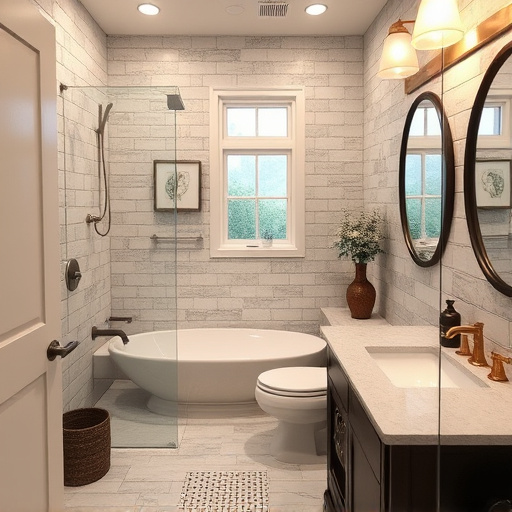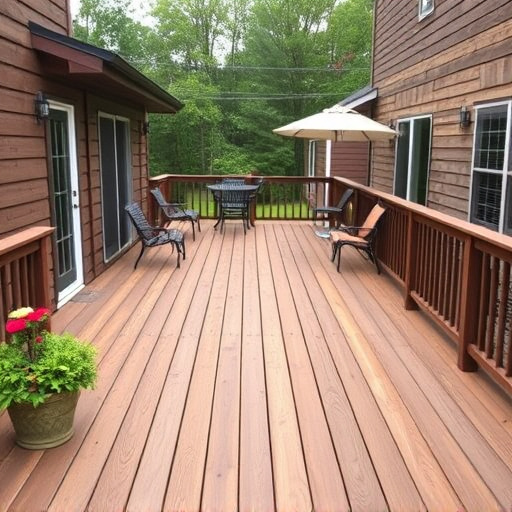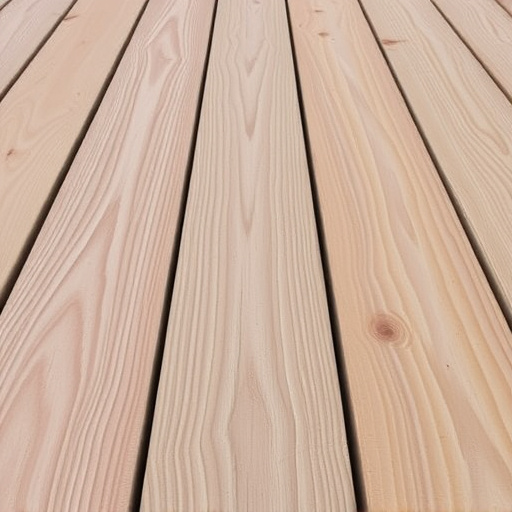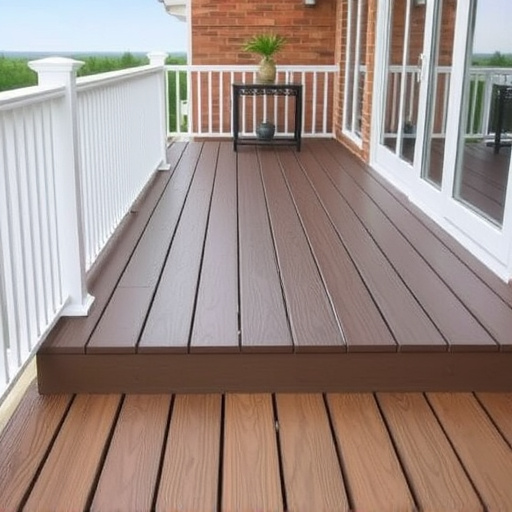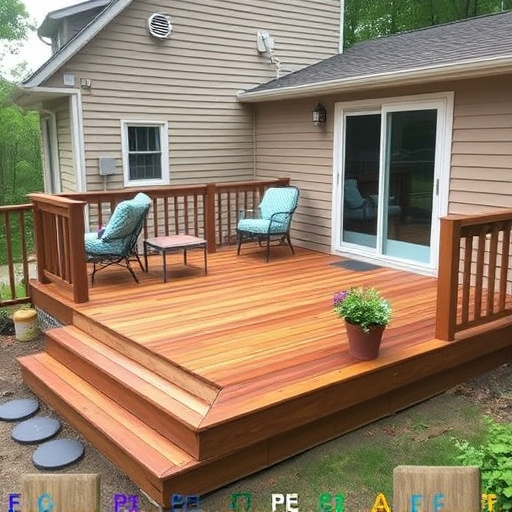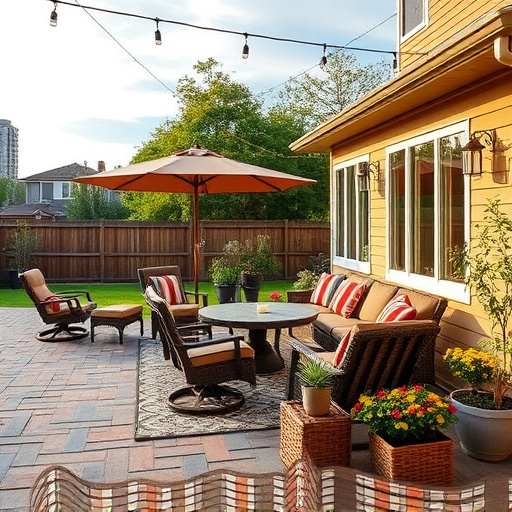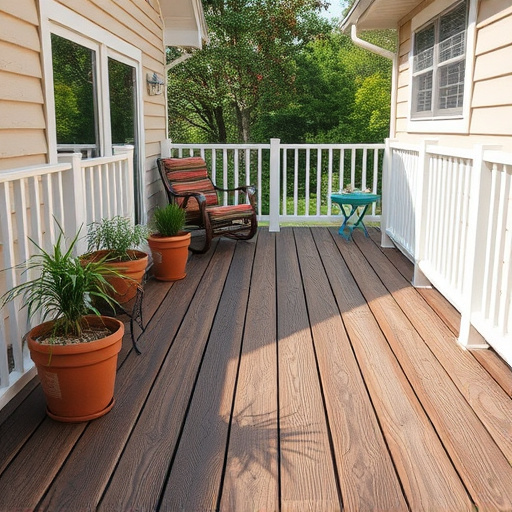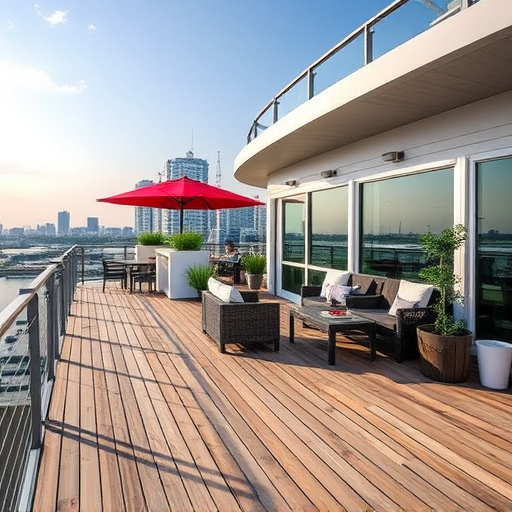Maintaining deck stairs safety is paramount for homeowners, adhering to local building codes regarding handrails, tread depth, and rise height. Regular inspections are crucial, especially post-extreme weather, to check for loose boards or damaged connections. Promptly addressing issues, from minor repairs to professional services, ensures a safe environment and hazard avoidance. Implementing physical measures like secure handrails (36 inches above deck surface) and guardrails on elevated areas significantly reduces injury risk. Regular maintenance extends the lifespan of deck stairs, preventing accidents and ensuring stability.
Ensuring the safety of your deck stairs is paramount for preventing accidents and protecting your loved ones. This comprehensive guide delves into essential tips every homeowner should know, focusing on understanding relevant safety standards, implementing robust physical measures, and adopting diligent maintenance and inspection practices. By following these best practices, you can create a secure environment, enjoy your outdoor space worry-free, and ensure the well-being of those who use your deck stairs.
- Understanding Deck Stairs Safety Standards
- Implementing Physical Measures for Protection
- Regular Maintenance and Inspection Practices
Understanding Deck Stairs Safety Standards
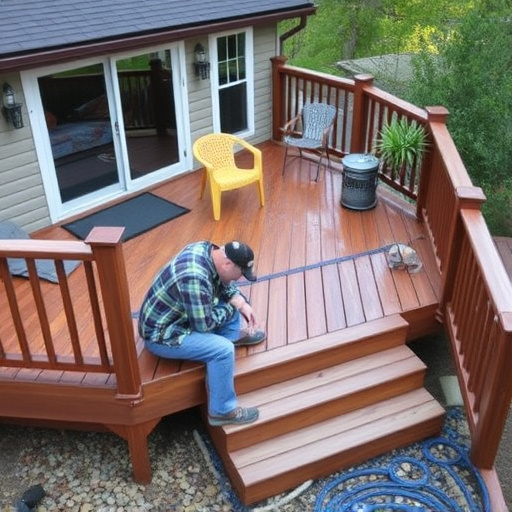
When it comes to deck stairs safety, adhering to established standards is paramount for homeowners. These guidelines are designed to ensure structural integrity and prevent accidents on outdoor staircases. The primary focus is on proper construction, including secure handrails, adequate tread depth, and rise height compliance. Local building codes often dictate these standards, so homeowners should familiarize themselves with the regulations specific to their area.
Regular inspection of deck stairs is crucial, especially for older structures or those with heavy use. Like any other part of a home, deck stairs require maintenance. This includes checking for loose or damaged boards, secure connections between steps and supports, and ensuring handrails are firmly attached. Addressing issues promptly, whether it’s a minor repair or considering professional services like commercial roofing or siding for more complex problems, is vital to maintaining a safe environment and preventing potential hazards.
Implementing Physical Measures for Protection
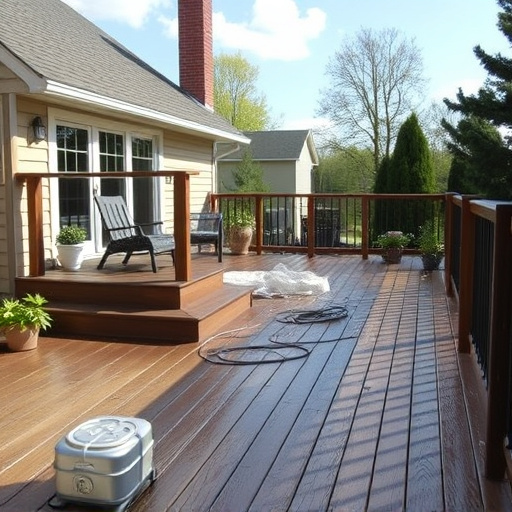
Implementing Physical Measures for Protection
When it comes to deck stairs safety, physical measures play a crucial role in preventing accidents and injuries. One of the primary concerns is ensuring proper handrail installation. Handrails should be firmly attached and extend across each step, providing a secure grasp for anyone ascending or descending. The height of the handrail must meet safety standards, typically around 36 inches from the deck surface, to offer adequate support and protection.
Additionally, consider adding guardrails on both sides of the stairs, especially if they are elevated or have a significant drop-off. Commercial siding and roofing solutions can enhance structural integrity while also providing a safe barrier. Regularly inspect these measures to ensure they remain secure and intact, as even small gaps can pose significant risks. Remember that implementing these physical protections is an essential step in creating a safer environment around your deck stairs.
Regular Maintenance and Inspection Practices
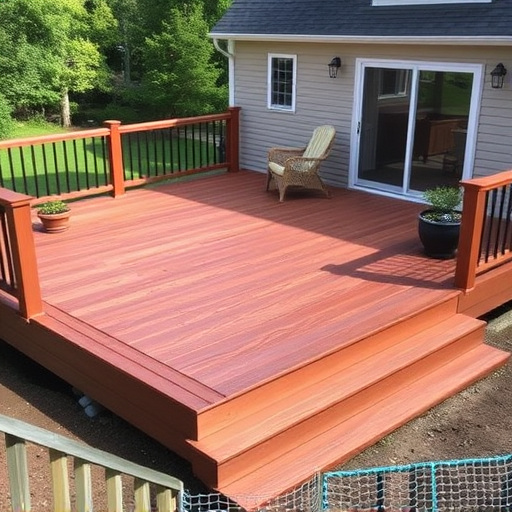
Regular maintenance and inspections are crucial for ensuring the safety and longevity of your deck stairs. As part of a proactive approach, homeowners should establish a routine to check for any signs of wear or damage. This includes examining the stair stringers, treads, and railings for loose or missing components. Simple repairs, such as tightening screws or replacing worn-out parts, can prevent accidents and prolong the life of your deck stairs.
It’s also recommended to conduct a thorough inspection after extreme weather events, like heavy storms or snowstorms. Additionally, a professional roof consulting service can assist in assessing structural integrity, identifying potential issues with residential roofing, and providing siding repairs if necessary. By integrating these maintenance practices into your routine, you ensure that your deck stairs remain safe and stable for years to come.
Ensuring the safety of your deck stairs is a crucial aspect of responsible homeownership. By understanding and adhering to safety standards, implementing physical measures like handrails and non-slip surfaces, and maintaining regular inspections, you can create a secure environment for yourself and your family to enjoy. Remember, a well-maintained deck enhances outdoor living, so let these tips guide you in making your deck stairs a safe and welcoming space.

